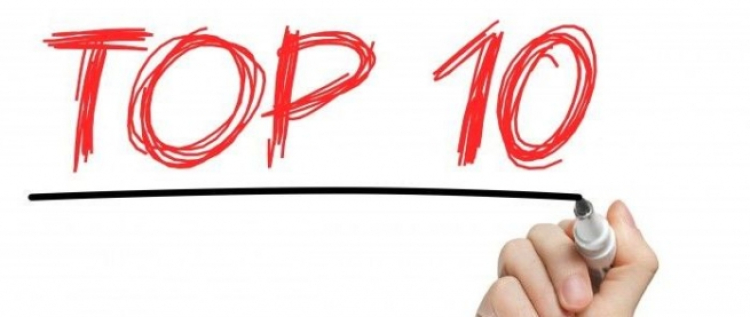
Great attention is paid to the development of sports and mass physical culture is our country
STATE COMMITTEE FOR PHYSICAL CULTURE AND SPORT OF TURKMENISTAN




China Daily prepared a Top 10 emerging technologies of 2019, based on the World Economic Forum’s annual list.
The technologies on the list were selected based on their potential to have a mainstream impact on societies and economies within five years.
“Now that we are well into the fourth Industrial Revolution, it’s critical we ensure humanity is served by these new innovations so we can continue to prosper,” Mariette DiChristina, editor-in-chief of Scientific American, said.
LET’S TAKE A LOOK AT THE TOP 10 EMERGING TECHNOLOGIES OF 2019.
1. Bioplastics for a circular economy is at the top of the list. Biodegradable plastics can contribute to the goal of a “circular” plastic economy in which plastics derive from and are converted back to biomass. In 2014 alone, industry generated 311 tons of plastics. Yet less than 15 percent of it is recycled.
2. Social robots. Robots today are able to recognize voices, faces and emotions; interpret speech and gestures; respond to verbal and nonverbal cues; and even make eye contact. They are increasingly being used to care for the elderly, educate children and do all sorts of tasks in between.
3. Metalenses. These lenses are so small that, up until now, it has been impossible to make them through traditional glass-cutting and glass-curving techniques. They can focus the entire visible spectrum of light, including white light, and will allow further miniaturization in sensors and medical imaging devices.
4. Intrinsically disordered proteins as targets for drugs. Intrinsically disordered proteins are proteins that can cause cancer and other diseases. Unlike conventional proteins, they lack a rigid structure, which makes them difficult to treat. Currently, with the aid of the latest technology, scientists have found a way to prevent their shape-shifting long enough for treatment to have an effect.
5. Collaborative telepresence. Imagine video conferences where you can not only feel as if you are in the same room as your correspondents but also can actually feel one another’s touch. Cisco Telepresence provides high-definition video, spatial audio, and a setup designed to link two physically separated rooms so they resemble a single conference room even though the two rooms may be on opposite sides of the world.
6. Smarter fertilizers. The automated application of fertilizers on a field has become a reliable farmer’s assistant. The latest versions of smarter fertilizers use more environmentally friendly sources of nitrogen, plus microorganisms that improve uptake by plants.
7. Advanced food tracking and packaging. Locating the source of food contamination can now take minutes rather than days as a result of a novel blockchain approach to monitoring food progress through the supply chain. Meanwhile, sensors in packaging can tell us when food is about to spoil, reducing the need to trash whole batches once an expiry date is reached.
8. Safer nuclear reactors. The great risk with nuclear power is that the fuel rods can overheat and, when mixed with water, produce hydrogen, which can then explode. New fuels are coming online that are much less likely to overheat and, if they do, produce very little or no hydrogen. The advantage is these new configurations can replace existing fuel rods with little modification.
9. DNA data storage. At the rate we are producing data, we probably have less than 100 years before the magnetic or optical storage systems we use at the moment will reach maximum capacity. These systems also consume huge amounts of energy. DNA, life’s storage material, has no such limitations. According to one estimate, all the world’s current storage needs for a year could be met by a cube of DNA measuring about one meter on a side.
10. Utility-scale storage of renewable energy. Lithium-ion batteries will likely be the dominant technology for the next years and continuing improvements will result in batteries that can store four to eight hours of energy – long enough, for example, to shift solar-generated power to the evening peak of demand.
Nargiza MELSOVA
(www.orient.tm)